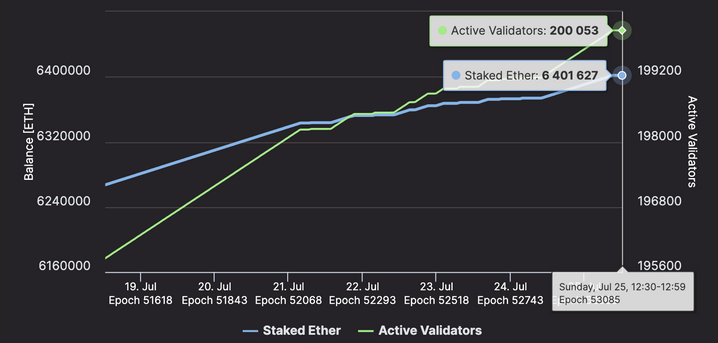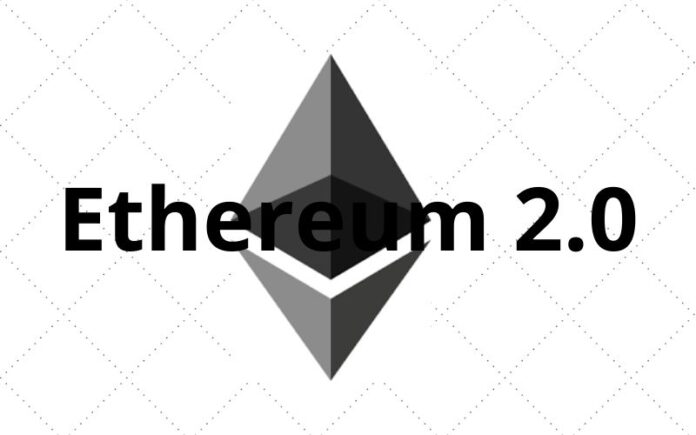Ethereum 2.0, for the first time since it launched on 1st December 2020, has surpassed 200,000 validators. And since the launch of the Beacon Chain, which is the first phase of the proof of stake (PoS) rollout, the network has been working smoothly.
About 6% of Ethereum (ETH) Total Supply Now Out Of Circulation
The good news is that Ethereum 2.0 continues to draw confidence, which is aiding the increase in the number of ETH locked in the deposit contract.
Read Also: Real Vision’s Raoul Pal: Ethereum (ETH) Will Beat Every Other Top Crypto in the Coming Years
According to Etherscan, Ethereum 2.0 deposits contract currently holds 6,418,690 ETH worth $14.9 billion at current prices. And it’s currently earning 6.1% a year in ETH as the network continues to grow in the number of validators.

This implies that about 6% of Ethereum (ETH) total supply will stay out of circulation for relatively another year.
200,000 Validators Do Not Imply 200,000 Individuals
It’s worthy of note that 200,000 Ethereum 2.0 validators do not imply 200,000 individuals. This number can be compared to Asics. Just like an individual can have many Asics, an individual can also choose to have many validators since the minimum requirement of being a validator is 32 ETH.
Read Also: Judging By History, Top Analyst Says Ethereum (ETH) Would Hit $18,000 by July 2022
However, the number of individuals involved can be known, but through access to node data, which is currently not available for Ethereum 2.0. That’s where the difficulty lies because an individual is capable of running many nodes with 32 ETH slots.
Ethereum 2.0 Chain Merge Created
On 22nd July, a researcher at ConsenSys, Mikhail Kalinin, created a pull request for EIP-3675 on Github, which indicates that the development is going in the right direction.
The proposal is targeted at initiating the process of upgrading the Ethereum network from its current protocol to the much-anticipated PoS consensus mechanism.
Read Also: This Is Why Ethereum Co-Founder Is Bidding Farewell to Crypto Industry
According to the specification found on Github, Etheruem 2.0 Phase 0, which is known as Beacon Chain, has been up and running since December 2020 without any record of failure:
“The beacon chain network has been up and running since December 2020. Neither safety nor liveness failures were detected during this period of time. The long period of running without failures demonstrates sustainability of the beacon chain system and witnesses its readiness to start driving and become a security provider for the Ethereum Mainnet.”
Also, the Ethereum London hard fork slated for 4th August 2021 is worth noting. The hard fork is expected to launch along with the much-awaited EIP-1559, an Ethereum Improvement Proposal designed to burn gas fees after changing the current auction mechanism.
Follow us on Twitter, Facebook, Telegram, and Download Our Android App


